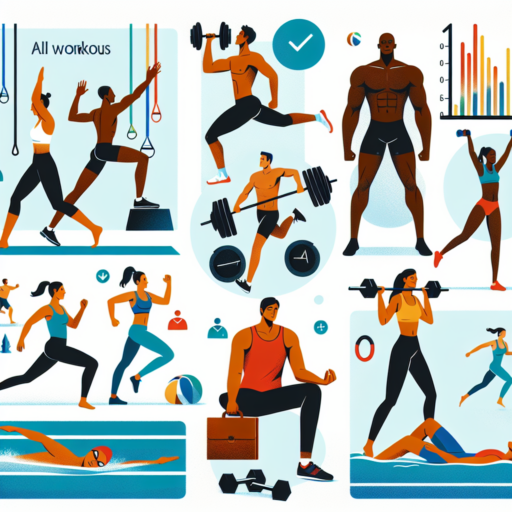How do you create an athlete training plan?
Creating an athlete training plan requires a blend of understanding the athlete’s current physical condition, their sport-specific needs, and their long-term goals. The first step is to conduct a comprehensive assessment of the athlete’s strengths, weaknesses, and any existing injuries. This can involve a combination of physical tests, performance evaluations, and discussions with the athlete about their personal and competitive objectives.
Setting Clear Objectives
Once the initial assessment is complete, the next step is to set clear, measurable objectives that align with the athlete’s goals. This might include improving specific areas of physical fitness, such as strength, endurance, or flexibility, or achieving certain performance benchmarks in their sport. Objectives should be SMART: Specific, Measurable, Achievable, Relevant, and Time-bound. This approach ensures that the goals are clear and that progress can be effectively monitored and evaluated.
Developing the Training Components
The core of the athlete training plan involves developing the specific components of the training regimen. This typically includes a mix of strength training, conditioning, skill development, and recovery strategies. The balance among these components will vary based on the sport and the athlete’s objectives. For instance, a sprinter may focus more on explosive strength and speed work, while a marathon runner might prioritize endurance and pace training. It’s also essential to incorporate rest days and recovery techniques such as stretching, massage, or hydrotherapy to prevent injuries and promote long-term athlete health.
Crafting an effective athlete training plan is both an art and a science. It requires a deep understanding of exercise physiology and sports psychology, as well as the ability to adapt and adjust the plan based on the athlete’s progress and feedback. By focusing on the athlete’s unique goals and needs, a personalized training plan can be developed that maximizes performance and minimizes the risk of injury.
No se han encontrado productos.
What is the best workout schedule for athletes?
When considering the optimal workout schedule for athletes, several factors come into play, including the type of sport, the athlete’s current fitness level, goals, and even the time of year (in-season vs. off-season).
Understanding the Athlete’s Body
It’s important for athletes to follow a schedule that allows for a balance between high-intensity training, adequate recovery, skill development, and strength conditioning. Typically, professional guidance from a coach or sports scientist is recommended to tailor a program that addresses all these aspects while also minimizing the risk of injury.
Sample Schedule Considerations
An effective workout schedule might include 3-4 days of sport-specific training, 2-3 days of strength and conditioning, and at least 1-2 days dedicated entirely to recovery. Variation in these routines not only prevents burnout but ensures all muscle groups are appropriately engaged and developed over time. It’s essential to integrate flexibility and mobility exercises, as well as sufficient warm-up and cool-down periods into every session to support optimal performance and recovery.
Moreover, the timing of workouts can be as crucial as their content. For instance, engaging in high-intensity sessions early in the day when the body’s cortisol levels are naturally higher, followed by skill-based or lighter practices in the afternoon or evening, could yield better results and support a healthier, more sustainable athletic career.
What type of training is best for athletes?
Identifying the best type of training for athletes hinges on various factors, including the sport they’re involved in, their current fitness level, and personal goals. However, some forms of training stand out for their comprehensive benefits, enhancing not only physical prowess but also mental toughness and discipline.
Strength Training
Strength training is crucial for athletes across all sports. It builds muscle, increases power, and improves endurance. Athletes can engage in weightlifting, resistance bands exercises, or bodyweight workouts to enhance their muscle strength and endurance. This form of training is not just about bulking up but increasing the efficiency and resilience of the muscles for peak performance.
Conditioning and Endurance Training
To excel in any athletic endeavor, athletes must also focus on their cardiovascular health. Conditioning work such as running, cycling, swimming, or high-intensity interval training (HIIT) can vastly improve an athlete’s endurance. This type of training ensures that athletes can maintain high levels of performance throughout their event or game, reducing the likelihood of fatigue affecting their performance.
What is the training cycle for athletes?
The training cycle for athletes is a systematic approach to training that involves a series of stages or phases specifically designed to enhance athletic performance. These cycles are meticulously planned and implemented to progressively overload and then allow the body to recover, ensuring continuous improvement. Understanding each phase of the cycle is crucial for athletes aiming to optimize their performance while minimizing the risk of injury.
Phases of the Training Cycle
- Preparation Phase: This initial stage focuses on building a solid foundation. It typically involves general physical conditioning and gradually increasing the intensity to prepare the body for more demanding sessions.
- Competitive Phase: Aimed at peaking the athlete’s performance, this phase includes more specific training tailored to the athlete’s sport or event, with a focus on optimizing speed, strength, and technique.
- Transition Phase: Also known as the recovery or off-season phase, this period allows athletes to rest, recover, and mentally recharge. It’s essential for preventing burnout and preparing the mind and body for the next cycle.
Strategically navigating through these phases allows athletes to systematically enhance their capabilities. The duration and intensity of each phase can vary significantly depending on the sport, the athlete’s level, and the specific goals they aim to achieve. Implementing this cyclical approach to training not only boosts performance but also plays a pivotal role in injury prevention by avoiding overtraining and ensuring adequate recovery time.



